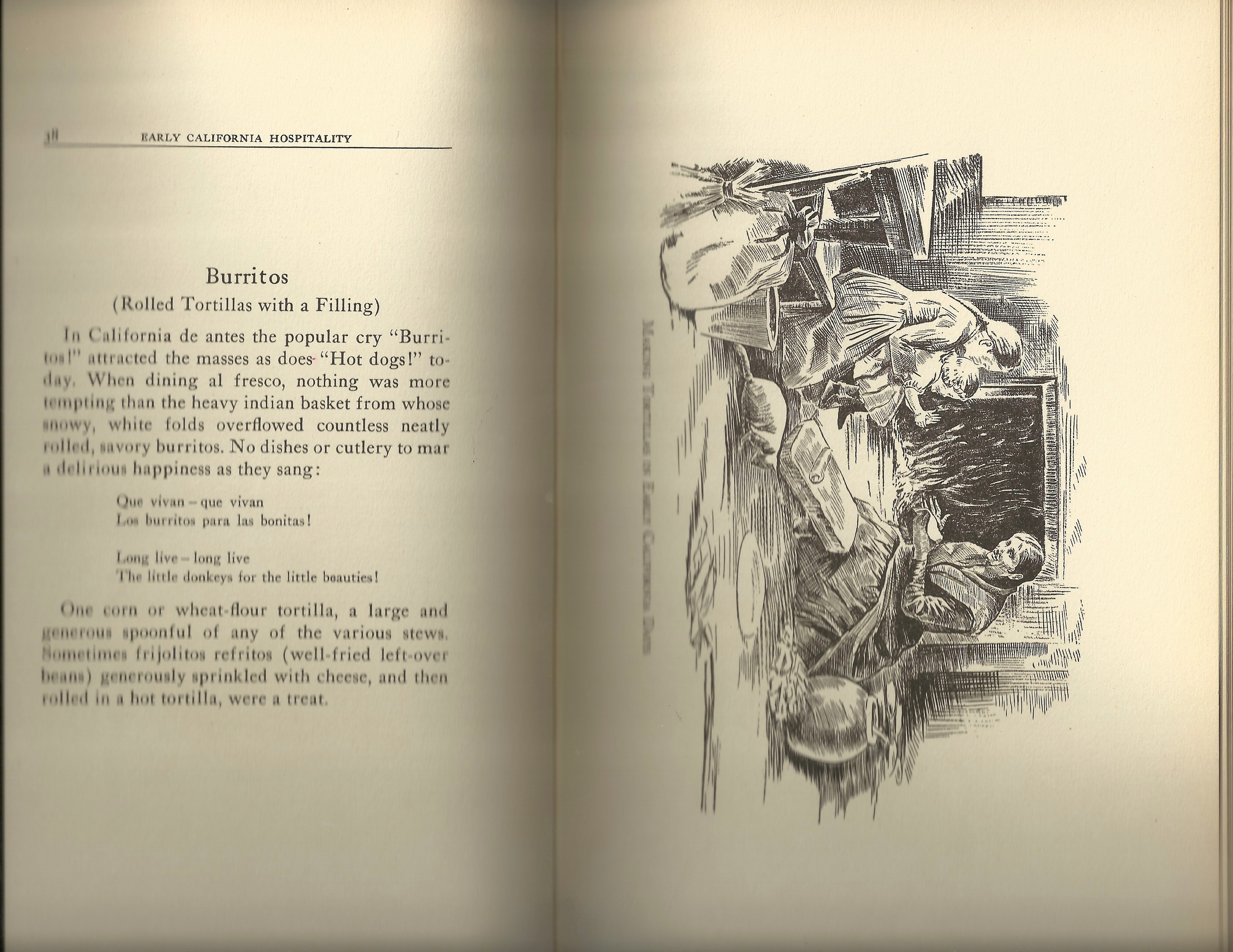I remember talking with someone who writes about pop culture who expressed a sentiment that was wrong in an interesting way.”Historians have it easy,” she opined. “Your target stays still.”
She viewed the past as static – whatever happened had already happened, so you didn’t have to predict anything. In fact historians have to reassess what they know when new primary sources are unearthed, and when that happens everything else needs to be rewritten. I have a few cases in point with relevance to my own writings, and since I can’t go back and rewrite the articles and books in question, I’ll address them here.
First, one I got wrong. In my article about the history of the burrito, I said that the first known written use of the name was a menu from El Charro Cafe in Tuscon, Arizona in 1922, not in Mexico, where the first documented burrito was served at Bol Corona restaurant in Tijuana in 1934. I also stated that there was no documented reference to burritos in California until 1958, when they were mentioned as a new oddity in an LA Times article. That was the same year they appeared in the Oxford English Dictionary, and the combination of those two references gives the impression that what was previously an obscure item went mainstream at about that time.
It has been a decade since that article was published, but within the last week I found challenges to two points I had stated as fact. First, the earliest mention of the burrito I had found was in Arizona, but I found the following paragraph in this article about burrito history:
The Diccionario de Mexicanismos has an entry for the burrito as early as 1895… The entry states that a burrito is “A rolled tortilla with meat or other ingredients inside, called ‘coçito’ in Yucatán and ‘taco’ in the city of Cuernavaca and in Mexico City.” The term burrito was popular in Guanajuato, a state in central Mexico. As the dictionary entry is the only hard and fast evidence we have to show where burritos came from, the idea that they originated in Guanajuato seems to be the most likely.
That description from 1895 does not mention a flour tortilla, which is one of the basic elements of a burrito as we know it. It is vague and could apply equally to what we now call a taco, taquito, flauta, or a burrito. The fact that an item by this name existed in Yucutan, where corn grows well but wheat very poorly, suggests that there may have been little or no difference between a taco and a burrito, at least in that region. The names of the two items may have been interchangeable then, but a distinction was eventually made between the two items. Interestingly, this is the only citation I have found anywhere referring to an item in Yucatecan cooking called a ‘coçito’ – there is no contemporary item in that cuisine by that name, and I haven’t found any other reference that isn’t directly quoting that dictionary. Given that the word “cosa” translates as “thing” and “-ito” is a diminutive, I could hazard a guess that someone once called a food item “that little thing” while a dictionary compiler was within hearing range. It’s impossible to prove, but it’s at least a plausible explanation for something that is otherwise inexplicable.
The other statement I made, regarding the first mention of burritos in California, has been proven wrong. Chef Anne Conness of Restaurant Sausal in El Segundo is a scholar of the food in early California, and she sent me this scan of a page from a book called “Early California Hospitality” by Anna Begue de Packman, published in 1938:
Note that this refers to a burrito as “one corn or wheat flour tortilla (with) a large and generous spoonful of any of the various stews.” Corn tortillas are almost never made larger than taco size because they have no gluten and aren’t stretchy – they crumble or break much more easily. A generous spoonful of stew inside a corn tortilla would be a mess. The quote also refers to leftover beans, which suggests that this item didn’t appear on restaurant menus because it was something made at home to use up leftovers. I’ve heard this supposition from other historians regarding why burritos didn’t spread more rapidly – if they were primarily a way poor people repackaged leftovers, they would be a low-status item and less likely to sell in restaurants.
The combination of these two citations lets us know that something called a burrito existed 39 years before I said it did, but doesn’t specify what it was. Had this been a Star Trek episode, one character might have said to another, “It’s a burrito, Jim, but not a burrito as we know it.” It almost certainly wasn’t what we now think of as a burrito – it was a handheld snack, not a plate-filling, sauce-covered full meal. On the other hand, you may notice that I said “almost certainly” in that last sentence. The Firesign Theater comedy group proclaimed in the title of one of their albums, “Everything You Know is Wrong.” I hope that isn’t true, but like anyone who peers into the shrouded world that is the past, the more I discover, the less certain I am that I know the whole story…
Next: An old beverage is proved to be much older…

